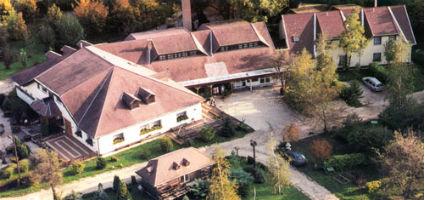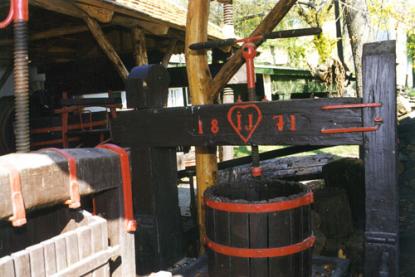2024. December 26. Thursday
Báder Region Historical and Wine Museum - Bicske
 |
Address: 2060, Bicske Szent László út 43.
Phone number: (22) 350-727, (22) 261-234
Opening hours: Mon-Sun 11-18
|
The first part of the exhibition presents booby hutches, hand push street wells, car parts put up against house walls and tools of tillage.

The raw of buildings begins with a smith workshop. A wainwright workshop is located opposite of this mirroring the close relation of these two workshops. The wainwright workshop hosts tools for wood manufacturing, as well as products made in the workshop.
Machines of tillage and forage are located in a separate building eg choppers, grinds, hand grinds, different storages and transportation vehicles, hackers, hoes etc. In the back shed, we displayed a chopper, seed cleaners, wagons, wooden shells etc. In the shed opposite of this, there is a horse carriage used at fire distinguishing.
In the attic of the building, we show furniture of a village room and kitchen, as well as pots, household machines, jugs and tools used at pigsticking. The visitors can also find military equipment among the objects displayed, as well as tools and equipment of a household eg spinning wheels, frails etc.
Barns and farm buildings are next in line where most of the household animals can be seen. At the end of the park, hunts can also be observed.
The collection reminds all visitors of the past. Information on the objects shown is set in Hungarian and English.

The raw of buildings begins with a smith workshop. A wainwright workshop is located opposite of this mirroring the close relation of these two workshops. The wainwright workshop hosts tools for wood manufacturing, as well as products made in the workshop.
Machines of tillage and forage are located in a separate building eg choppers, grinds, hand grinds, different storages and transportation vehicles, hackers, hoes etc. In the back shed, we displayed a chopper, seed cleaners, wagons, wooden shells etc. In the shed opposite of this, there is a horse carriage used at fire distinguishing.
In the attic of the building, we show furniture of a village room and kitchen, as well as pots, household machines, jugs and tools used at pigsticking. The visitors can also find military equipment among the objects displayed, as well as tools and equipment of a household eg spinning wheels, frails etc.
Barns and farm buildings are next in line where most of the household animals can be seen. At the end of the park, hunts can also be observed.
The collection reminds all visitors of the past. Information on the objects shown is set in Hungarian and English.
